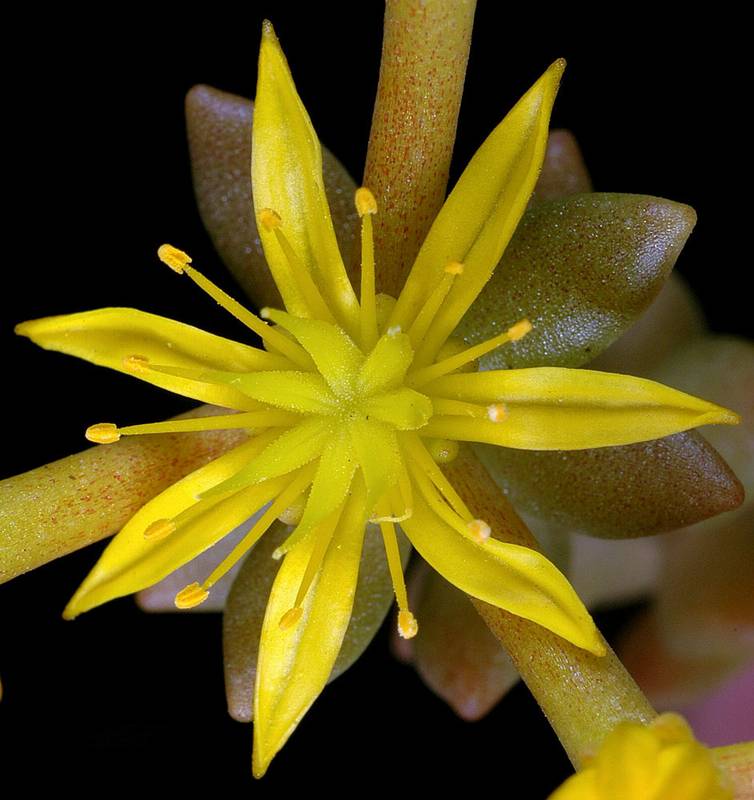Sedum leibergii
Sedum laxum
Leiberg's stonecrop
Basal leaves crowded is rosettes, oval, some less than 5 mm. long, rice-like in appearance, others more elongate and spatulate, covered with short projections;
cauline leaves near the base narrowly spatulate-oblanceolate, up to 25 mm. long, reduced upward to obovate and 6 mm. long.
Flowers numerous in several-rayed, spreading cymes, sessile;
sepals 5, triangular to lance-ovate, 1-1.5 mm. long;
petals 5, distinct, narrowly elliptic-lanceolate, acuminate, 5-8 mm. long;
stamens 10, shorter than the petals;
pistils 5.
Follicles 5, widely spreading, basally united for 1 mm., covered with glandular projections.
Flowers with more than 5 follicles, as shown in the photos, are rare.


